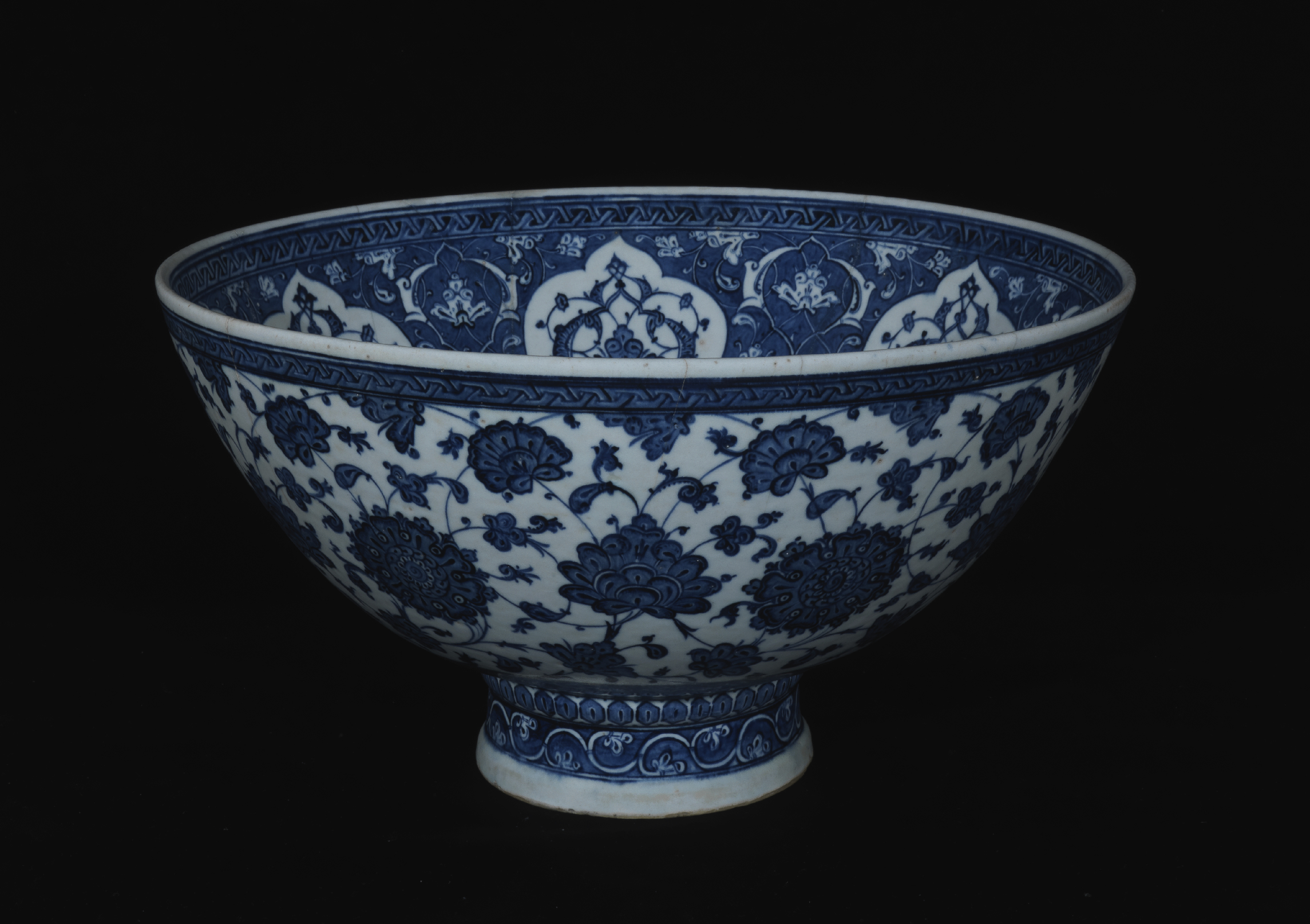
- Turkey, Iznik, c. 1510
- Fritware, painted underglaze
- Inv. 211
Footed bowl
Probably used for ritual ablutions, this bowl is one of the more remarkable creations from the Iznik potteries and its decoration presents clear evidence of the influence of Chinese porcelain.
The exterior has hatayi-type decoration with garlands of stylised flowers of Chinese inspiration in blue on a white ground. Inside, around a central medallion, with cloud scrolls and knots, there are six lobed panels in a radial composition filled with rumi decoration, arabesques on a white ground with alternating panels in white on blue.
These decorative elements allied with the chromatic range characterise Iznik production between 1510 and 1520, a time when it was undergoing a period of great vitality, that lasted until the end of the 16th century, thanks to the patronage of the Ottoman court, which ensured the commissioning of quality pieces.
Brouwer Collection, Nice. Acquired by Calouste Gulbenkian through M. Pollak, Paris, 22 February 1929.
H. 22 cm; Diam. 42 cm
Atasoy 1989
N. Atasoy and J. Raby, Iznik. The Pottery of Ottoman Turkey. London: Alexandria Press, 1989, no. 292.
Seville 1992
Arte y cultura en torno a 1492. Seville: Seville Universal Exhibition, 1992, no. 5.
Queiroz Ribeiro 1996
Maria Queiroz Ribeiro, Iznik Pottery. Lisbon: Calouste Gulbenkian Museum, 1996, pp. 92–3, no. 1.
New York 1999
Katharine Baetjer and James David Draper (eds.), 'Only the Best'. Masterpieces of the Calouste Gulbenkian Museum, Lisbon, exhibition catalogue. New York: The Metropolitan Museum of Art, 1999, p. 60–1, no. 25, colourpl.
Lisbon 2001
Calouste Gulbenkian Museum. Lisbon: Calouste Gulbenkian Museum, 2001, p. 46–7, cat. 29.